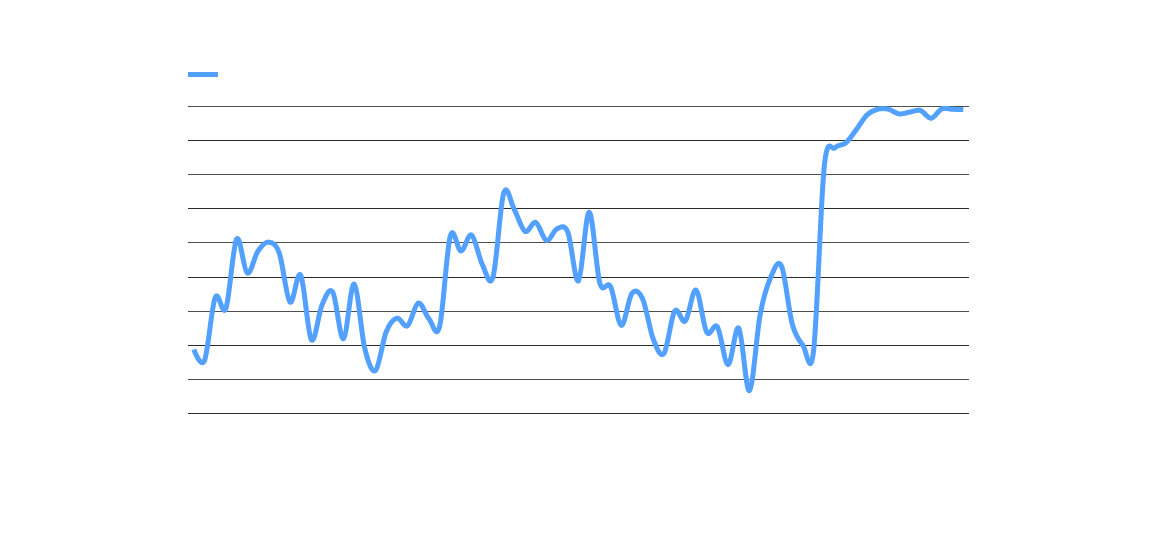Artificial budget increase for the target share of possible impressions – Google Ads strategy

There is a way to most likely get ads to the top search position: by artificially inflating the daily budget in the “Target impression share” bid strategy. In fact, there are special cases where this is worthwhile.

If ads for high-priced offers do not achieve a profitable cost per lead, there can be a number of reasons. Maybe the way the offer is designed isn’t attractive enough – maybe the landing page has structural weaknesses, unconvincing headlines, and lots of bounces.
But it may also be that the type of traffic is not sufficiently relevant. This can be traffic from target groups with wastage or keywords. Or: Traffic that comes from a specific ad position. It is therefore possible that cheap clicks that come from lower ad positions in the Google search network do not convert to high-priced offers – because users research low ad positions, but trust the provider in the top search position with the most quality, awareness and professionalism . This is certainly also due to the fact that many online users are not quite aware of how the paid ad rankings on Google are achieved. On the other hand, many cheap clicks can bring thousands of users to the site per month due to their sheer mass and generate a handful of customers, especially for topics that require explanation – which are reasonable for the cost per deal.
As always, it is important to test which approach works better. Above all, however, your own assessment of proportionality is important: If I have a high-priced offer – do I really want to rank in the top search position at all costs? With click prices of €20 – €30 on the top search position, this is risky. As of 2022, there are such click prices in real estate owner acquisition, marketing agencies and SaaS keywords. Assuming that a conversion rate of 1% – 3% is realistic on a landing page for high-priced topics on Google Ads, with a click price of €20 we would calculate a cost point per conversion of €2,000 to €600 – €700 in the best case reach. However, a good cost point per conversion for high-priced topics would be between €150 and €250. That means: With such a high click price, we wouldn’t get anywhere.
However, if the click price for the top search position is up to €7 and we have a conversion rate of 3% on the landing page, we would have a realistic probability of achieving a cost point of around €233 per direct request.
However, this only makes sense if all other registers have not worked. If the bid strategies maximize conversions, maximize conversions with target CPA, auto-optimized CPC, or switching to performance max campaigns did not bring any results to light, there is the corresponding advanced option: Artificial budget overrun with the bid strategy “share of possible impressions ”.
For high-priced topics, users at the top of the Google Ads search network sometimes convert better
As already mentioned, users sometimes trust the provider on the top search position on Google with the most credibility and quality. Especially in industries in which a lot of trust is required, users convert very strongly on the top search position than when they click the same ad on one of the lower positions. This usually applies to high-priced topics such as offers from educational institutions, real estate, IT support or legal advice.
Requirement: Keywords with a very low search volume
So that there is no cost explosion, the following should be observed: This strategy is suitable for keywords that have such a low search volume that personalization cannot realistically be used here. In this case, we can rate a maximum of around 300 searches per month as a low search volume. In addition, the keywords should preferably be booked with the keyword options “matching phrase” or “exact match” (as long as these options still exist, as of 2022). This is important for setting up the artificial budget overrun so that the budget is not exhausted – because with the keyword type “broad match” the probability of this is high.
So if only 50 clicks per month are triggered on a campaign, but these are already highly qualified by definition due to the very specific industry keyword, we can assume that we have already exhausted the maximum of available possibilities and here too no more personalization can realistically take place due to the insufficient data basis. The users that come in here are already the ones we want.
Implement artificial budget increase
So if the desired keyword and ad are there, the bid strategy “impression share” must be selected, with the option “top of search results page”.
Then specify the desired impression share and set the CPC bid. If the bid for the top search position is below €7 anyway, it is a particularly good fit because you are beating the previous bids. Based on the calculation above, I would be very cautious about spending more than €7.
The budget then has to be artificially inflated. If you only get 50 clicks a month with a search volume of 300 (using the phrase match and exact match keyword options), then it’s likely to stay the same in the future. However, since you have previously deposited the budget cap of €7 per click, the budget will not be exhausted with this search volume. In the next step, we still store a security mechanism.
If the budget is inflated with 2 clicks a day, for example with a daily budget of 60€, the delivery on the top search position is very strongly preferred and we automatically receive an optimization factor of permanently 90% – 100%. Apparently the system thinks: The more budget is deposited for a few placements, the “better” the advertiser.
To be on the safe side: Set a rule for automatically setting up the campaign
It can be very effective – but as you can probably imagine, it can also explode in terms of budget if the total search volume of the keyword increases drastically, contrary to expectations – for example due to media reports on the topic. So to be on the safe side, always store an automated rule in Google Ads so that the campaign pauses itself when a certain threshold is exceeded.
Conclusion: how the artificial budget increase works
The highlight of the artificial budget increase is that it remains artificial and is not exhausted. We continue to pay roughly comparable click costs and daily budgets as we would with a regular campaign. The artificially inflated budget isn’t used because the search volume is just way too small, and as long as there’s no one bidding higher for that specialized keyword, the CPC stays similar.
By artificially increasing the budget, the algorithm seems to “think” that we are the “best” advertisers with this campaign configuration. As a result, the algorithm prefers the allocation of impressions, and above all the placement in first place with the same click prices. You’ll see that you’re pretty much getting your desired top impression share in the report and your costs are staying the same – only now the ad is showing consistently in the top position.
Overview
-
For high-priced topics, users at the top of the Google Ads search network sometimes convert better
-
Requirement: Keywords with a very low search volume
-
Implement artificial budget increase
-
To be on the safe side: Set a rule for automatically setting up the campaign
-
Conclusion: how the artificial budget increase works
You might also be interested in:
Track phone number redirects from Google Ads campaigns
With Google Tag Manager you can install phone number forwarding for Google Ads campaigns on your website.
Create reports with Data Exploration in Google Analytics 4
Many report views that were preconfigured in Google Analytics 3 must be manually created in Google Analytics 4.